Hamstring Muscle Pain
What is hamstring muscle pain?
- Hamstring Muscle Pain: Pains and Aches on the rear of your legs may signify a hamstring injury. Your hamstring may be a group of muscles located on the back of your thighs. Strain in these muscles is comparatively common, especially in people that play sports that involve sprinting, like soccer, basketball, or track.
- Mild hamstring injuries may return well to rest, over-the-counter (OTC) medications, and ice, but more severe cases may take months to heal.
What is a Hamstring Muscle?
- The hamstring muscle is a group of four muscles. Your hamstring muscles are connected in the back of the thigh, starting at your hip and inserting into the knee. Hamstring tendons connect them to bones in your pelvis, knee, and lower leg.
- The hamstrings are a group of muscles and s at the rear of the upper leg. They involve the biceps femoris, semimembranosus, and semitendinosus. The hamstrings flex the knee joint and extend the thigh to the back side of the leg. They are used in running, walking and many other physical activities.
Sing and symptoms of hamstring muscle pain
Hamstring muscle pain differs from person to person, depending on the source of pain, and can vary in nature. For some people, hamstring pain feels like a sharp, dull, and aching pain in the back of the leg, sometimes with tightness.
- Symptoms that might indicate a more sever condition involve:
- Swelling
- Unusual numbness or pale color in the back of the thigh
- Tingling and numbness in the thigh and leg
- Weakness in the leg that comes on unexpectedly
- Fluid retention
- Redness of the hamstring
- Tenderness and warmth of the hamstring
- You should be consulting a doctor if you have any of these symptoms in addition to hamstring pain.
Causes of hamstring muscle pain
- The main cause of injury to the hamstring is muscular hypertrophy. Strains and tears happen when the muscle is lengthening because it contracts or shortens. they’ll also happen if the muscle is stretched too far or is taxed too suddenly.
- When you sprint, for instance, your hamstring muscles must contract repeatedly as your leg lengthens together with your stride. All this lengthening and loading of the muscles creates an ideal environment for injury.
- you’ll feel anything from sudden pain to a popping or snapping feeling in your leg. Your hamstring may feel tender and you would possibly even see bruising at the site of your injury.
There are various risk factors for hamstring strain
- Exercising with tight muscles. Athletes who have particularly tight muscles could also be more likely to experience injury.
- Muscle instability, where certain muscles are stronger than others.
- Poor conditioning. If the muscles are weak, they’ll be less ready to deal with the demands of certain sports or exercises.
- Fatigue within the muscles, because tired muscles don’t absorb the maximum amount of energy.
- Hamstring strain is usually seen in people who participate in the following activities:
- Football
- Soccer
- Basketball
- Tennis
- Sprinting and running, and other track events
- Dancing
- Older athletes who walk as their primary sort of exercise are also at higher risk. So are young people whose bodies are still growing. Bone and Muscles don’t necessarily grow at an identical rate. this suggests that any force or stress to the muscles, sort of a jump or impact, may leave them susceptible to tearing.
Treatment
Immediate treatment
If you are feeling sudden pain in your hamstring, stop what you’re doing to stop more damage. you’ll have heard the initiation RICE before. it’s going to help you get better, faster recovery
Rice approaches
- Rest. Avoid doing activities that will aggravate your injury. this might mean totally resting or even using crutches or another mobility aid.
- Ice. Use a chilly pack for 15 to 20 minutes every 2 to 3 hours throughout the day. you’ll even use something like frozen peas wrapped in a light towel. Don’t apply ice to the skin.
- Compression. Consider bandaging your thigh with an elastic wrap to control swelling and movement.
- Elevation. try to remain your leg propped up on a pillow to your heart level
Medical treatment
- OTC pain medications may help to relieve your pain with a hamstring injury. Oral non steroidal anti-inflammatory drug drugs (NSAIDs) like ibuprofen (Motrin, Aleve), or another OTC pain medication like acetaminophen (Tylenol), could also be good for short-term relief.
- Topical NSAID creams or gels also can help ease the pain. If you are feeling you have injured yourself severely, though, it’s an honest idea to see your doctor before self-medicating.
- Another option for pain relief includes using a foam roller to apply what’s called myofascial release to your hamstrings. Place the roller just above the rear of your knee and roll upward in the direction of blood flow to massage the muscles. Professional sports massage can also help with your pain
Physiotherapy treatment
The goal of physiotherapy treatment are:
- Relieve hamstring muscle pain
- Reduce muscle swelling
- Increases hamstring muscle strength.
- Restore patients’ full functional activity
The first few days take modalities that will relieve pain. after pain relief starts mild to moderate pain-free exercise.
Electric modalities
Ultrasound
Ultrasound has been used repair to tissue healing and increases blood circulation and mobility.
to reduce lump and pain
Cryotherapy
Inflammation and lump can be reduced by applying cryotherapy in form of ice packs, and cold water cataracts to the affected area.
Continuous application of colds several times a day for 25- 30 minutes at a time is recommended.
TENS
Trans-cutaneous electrical nerve stimulation( TENS) may be suitable to help relieve pain and muscle spasms.
IFT( Interferential therapy) here is the main clinical applications for which IFT appears to be used
- Pain relief
- Muscle stimulation
- Increased local blood flow
- Reduction of edema
Exercise for hamstring muscle
Active exercise
1)Hip extension pron lying
2)Pron knee banding
3)Heel press
4)SLR- Straight leg raise
Stretching exercise for hamstring muscle
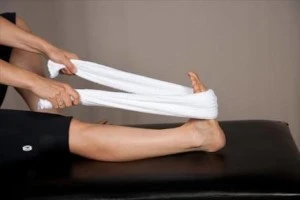
1)Towel hamstring stretch
Hold a towel in hand and a comfortable place to stretch,
Lie on the rear, wrap a towel around the back of one thigh and support the thigh by holding each end of the towel.
If a towel isn’t available, the hands are often used to hold the thigh.
Remain the other leg flat on the floor.
Slowly straighten the knee till a stretch is felt within the rear of the thigh, trying to induce the bottom of the foot to equal with the ceiling.
Always extend the leg and straighten the knee till the stretch
Hold the position for 10 seconds, and gradually improve up to 30 seconds.
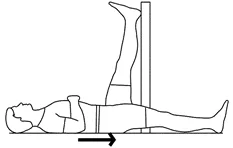
2) Wall hamstring stretch
Do this exercise at the corner of a wall or near a couch.
Remaining one leg on the ground, place the opposite leg against a wall or arm of a couch.
Gently push the knee in order that the raised leg is as straight as tolerable.
Hold the 10 seconds, and gradually improve to 30 seconds.
Perform this stretch with one leg, one at a time, 4 to 5 times for a complete set.
perform 2 sets per day.
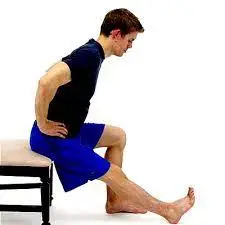
3) Seated hamstring stretch
To stretch the hamstrings while sitting,
Sit on the edge of a chair, and straighten one leg in front of the body with the heel on the floor.
Straighten the spine by sitting tall and rotate the pelvis forward.
Hold this stretch for 30 seconds.
Repeat 3 times for each leg. Aim to perform this exercise 2 times per day

4) Hamstring stretch on the edge of a couch
Sit on the edge of a couch
Lay one leg along the edge of the couch while the other leg is placed down with the foot resting on the floor.
Bend forward at the hip, remaining the spine straight.
Try to remain leg on the couch as straight as possible without pain.
Hold this stretch for 30 seconds.
Repeat 3 times for every leg.
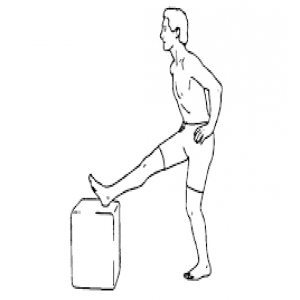
5) Standing hamstring stretch
Perform this stretch while standing near a step, stair, or raised surface by following the way
Extend one leg out by placing the heel on a slightly raised face, similar to a stair or curb.
Keeping the chin straight, bend at the hip to bring the chest toward the thigh.
The other leg that isn’t being stretched will also bend slightly at the knee.
do this stretch for 10 to 20 seconds.
Repeat 3 times for each leg. Aim to perform this exercise two time par day.

6) Toe touching
Another way to stretch your hamstrings is by touching your toes.
While standing, bend ahead from the hips and try to touch your toes with your fingers.
Strengthening exercise
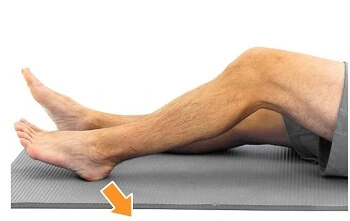
1)Hamstring Sets
This hamstring strengthening exercise is the perfect place to start, mainly after an injury as it doesn’t require any knee movement. It is simple to control how difficult you work the hamstrings by converting how hard you push the heel down
Hamstring Sets – a good way to strengthen the hamstrings without requiring moving the leg
Starting Position: Lie down on your back or comfortably, with your knee slightly bent and your heel on the floor
Action: Press the back of your heel gently down. You have to feel the muscles in the back of your thigh contract
Hold for 5-10 seconds and relax
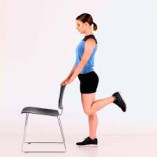
2) Hamstring Curls
This exercise gets the hamstrings working as the knee bends, making it functional but without putting important force through the muscles or the knee.
Knee bends are an easy way to start strengthening the hamstrings. Perfect after an injury
Start with standing upright holding onto a table or chair for support
Action: Lift your foot back behind you bringing it up close to your glutes as high as you can. Hold for 5 seconds and slowly bring the foot down to the floor
Get batter including an ankle weight or wear a shoe to work the muscles stronger
alternate Position If you go to do hamstring strengthening exercises lying down, lie on your abdomen with your legs stretched out. slow lift your foot, bringing it close to your glutes and also lower down. for Progress in the same way as in a standing position
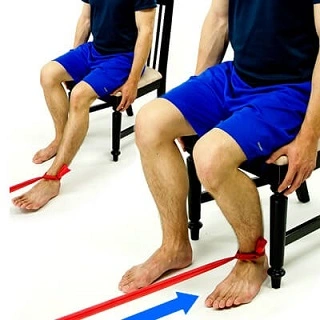
3) Seated Theraband Hamstring Strength
Theraband is a great exercise tool to use with hamstring-strengthening exercises
Starting Position Tie one end of the theraband to something sturdy directly in front of you similar to a table leg. Fasten the other end of the band surrounding your ankle and sit in a chair with your leg out ahead of you
Action: go slow slide your heel back, bend the knee and pull against the band. As the force increases through the theraband, you become to feel the hamstrings working harder. Hold for 5 to 10 seconds and slowly back to starting position
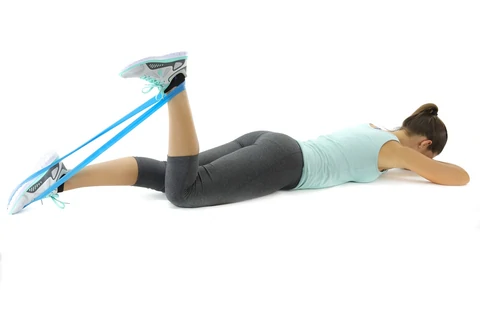
4)Prone Theraband Knee Flexion
Theraband is a great appliance to use with hamstring-strengthening exercises
Starting Position: Tie the theraband so it forms a loop and hooks it around the foot of your good leg and the ankle of the leg you want to work. Lie on your belly with your legs out straight, feet slightly apart
Action: Bring your heel close to your bottom pulling against the theraband up to your can. Hold for 10-15 seconds and slowly return to starting position

5) Sumo squat
Stand with feet slightly wider than hip-width. Point your toes about 45 degrees outward. Your hips should be rotated outward.
Put your arms out ahead of you at shoulder level. If you are using weight, hold the dumbbells securely at the shoulders or in a goblet position ahead of your chest.
Take a deep breath, engage your core, and push your hips back, go down into a squat position.
Pause at the bottom, exhale, and press back into a starting position. Keep weight evenly distributed in the knee and heel.
Do 10-15 reps.
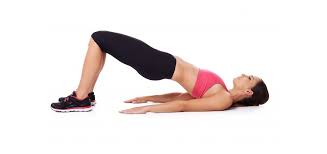
6)Bridge
Lie on your back with your knees bent and feet flat on the mat about a foot away from your butt. Arms should rest at your sides.
Contract your abdominal muscles and glutes, push your heels into the mat, and lift your hips up the floor until your body is straight from shoulders to knees. Focus on squeezing the hamstrings.
Pause in this position for 10 to 15 seconds
back to the starting position and repeat.
Do 10 repetitions.
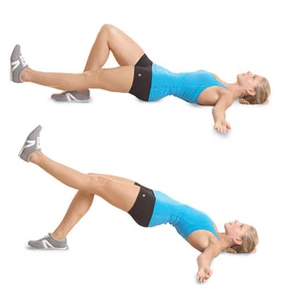
7) Single-leg bridge
Lie on your back with your knees bent and feet flat on the mat about a foot away from your butt. Arms should rest at your sides.
Contract your abdominal muscles and glutes, push your heels into the mat, and lift your hips up the mat until your body is straight from shoulders to knees. Focus on squeezing the hamstrings.
Raise and extend your right leg while reaming your pelvis raised and level. Your left foot stays planted on the mat.
Pause for 5 seconds before returning your bottom to the mat. remain the left leg raised and extended.
back to the starting position and repeat with the right leg raised before changing to the right leg.
Do 10 repetitions on each leg.
Prevention of hamstring muscle pain
All hamstring muscle pain is not prevented.
Which patient is in the higher risk group, like the older adult /an adolescent who has experienced the sudden impact that is causing the injury?
Take regular stretching & strengthening exercises which are helpful in the risk of hamstring pain.
Ask the doctor to suggest the specific exercises that work best for the particular activity.
There are present of some common prevention tips:
- Always do the first Warm-up before working out or playing sports, & do the cool down afterward.
- Do Exercise regularly to maintain cardiovascular and muscular fitness.
- Spend time stretching and strengthening exercises of the muscles in the weekly exercise routine.
- Sometimes Take two days off or do easy exercise when they do a particularly hard physical activity this method is to give the body adequate rest.
- This pain is relieved With some RICE principle = rest, ice, compression & elevation which is applied in the back on the feet in no time.
- Do contact or call to doctor when the patient feels the hamstring pain and injury is more serious.
- So that after treatment back to normal activity.
Chronic hamstring pain
- Chronic hamstring pain means the patient feels the same as muscle pain in a few days or months.
- At to Urgent base Orthopedic doctor, pain management specialist, and musculoskeletal
- Regenerative medicine physician helps patients recover and manage chronic hamstring problems.
Who’s prone to chronic hamstring pain?
- Runners, athletes & weekend regulars who play sports that feature sudden stops & starts like tennis, basketball in e to hamstring muscle injuries.
- The hamstring muscles run from to hipsterism joint below to the knee joint at the back of the thigh.
- In this sports activity always applied in the hamstring muscle when applied to load & stretch too far.
- The patient is further experiencing hamstring tendon injury which is the tendon that attaches the thigh muscles to the bone.
- On an Urgent basis, doctors do simply stretch the hamstring muscle but if they don’t relieve the pain they need surgery. Most chronic hamstring pain is healed within a few days & without surgery.
- To prevent further damage, always note and observe the symptoms every day.
What is Treatment for chronic hamstring pain?
To Reduce the inflammation
Follow the RICE principle after the hamstring muscle injury: rest, ice, compression & elevation.
- If swelling is present Use ice packs.
- Resting the injury is essential as soon as to feel symptoms so don’t cause further tissue injury.
- Use an elastic wrap to reduce swelling.
- Use heat for the damaged muscles
For pain relief
Injections
- Use the topical gel to help in reducing pain and inflammation.
- Don’t use painkiller medication for long periods because their side effects cause serious health complications.
- Do the pain-free stretching and strengthening exercises
- If the hamstring pain is not improved, the doctor is advised to do a steroid injection.
- Alternately, the doctor is suggested with platelet-rich plasma = PRP injection.
- The platelets contain rich nutrients that rush to the site of the inflammation and help to heal hamstring pain.
- Platelet-rich plasma (PRP) injections are used as the blood platelets in a high amount of concentrated.
FAQs
What does hamstring pain feel like?
A hamstring injury generally causes an unexpected, sharp pain in the back of your thigh. You might also feel a” popping” or tearing sensation. lump and tenderness generally develop within a few hours.
How do you get relief from hamstring pain?
Apply ice packs several times a day to relieve pain and reduce lumps. Wrap the injured area with a crap bandage or wear crap shorts to minimize swelling. Rest with your leg elevated above the position of your heart, if possible, to improve drainage and minimize swelling
What are three signs of a strained hamstring?
swelling, tenderness, and bruising in the back of the thigh.
pain in the back of your thigh when you straighten or bend your leg.
weakness in your leg that lasts for a long duration after the injury.
Should you massage a hamstring injury?
If you have persistent hamstring pain, tightness, and discomfort “shin splints”, “runner’s knee” or an acute hamstring strain, you may need a gentle, early intervention physiotherapy massage session to help reduce the pain and fast up the recovery process.
How long does a strained hamstring take to heal?
grade 1 or 2 (Mild to moderate) tears or strains can heal within three to eight weeks with diligent home therapy. For a grade 3 (severe) hamstring tear or strain, recovery may be as long as three months.


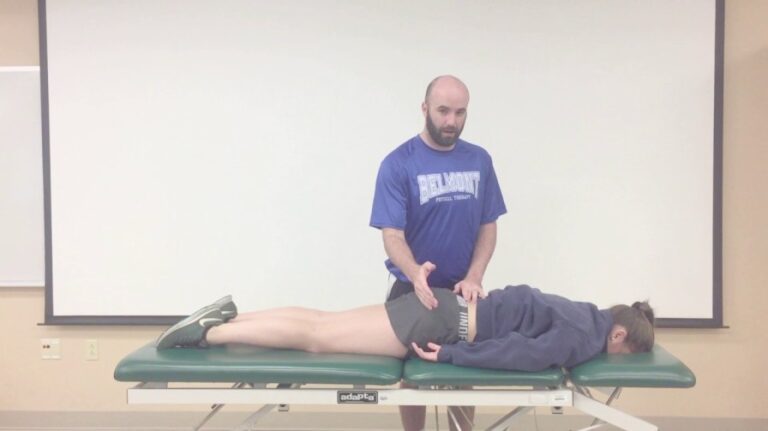
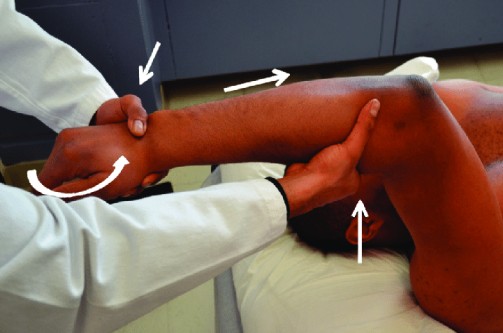
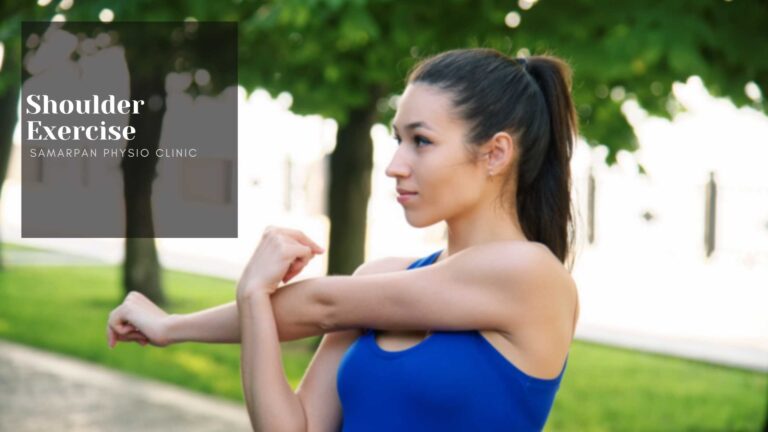
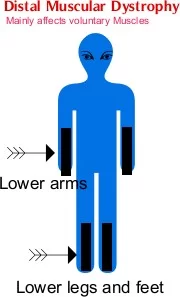
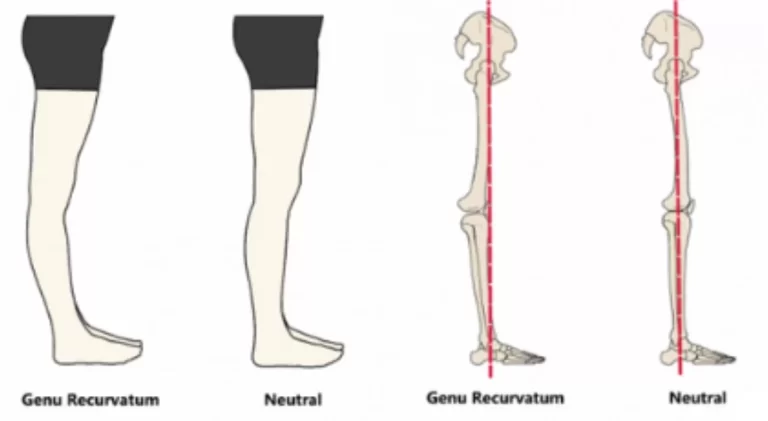
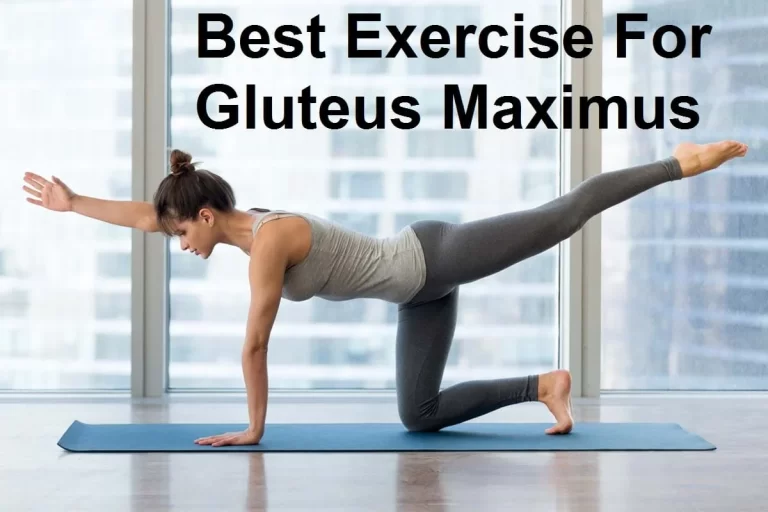
One Comment